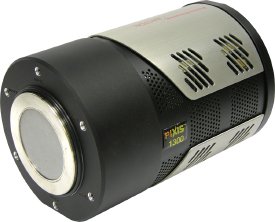Princeton Instruments, (PI), is pleased to announce the new PIXIS-XB series of direct detection cameras. The PIXIS-XB series is based on PI's highly popular line of PIXIS cameras and is designed for the extremely low flux imaging and spectroscopy applications in X-ray energy range between ~ 3 keV to 20 keV.
The new PIXIS-XB models feature front-illuminated and back-illuminated, deep depletion CCDs with wide variety of formats from 1340x400 to 1340x1300 pixels. These cameras provide unprecedented sensitivity and dynamic range in their class. These cameras can easily run from a laptop computer with the USB 2.0 interface and full triggering/shutter control capabilities are incorporated operating at 100 kHz and 2 MHz. PIXIS-XB cameras are especially suited for medium X-ray applications such as X-ray Photon Correlation Spectroscopy (XPCS), X-ray Intensity Fluctuation Spectroscopy (XIFS), X-ray Spectroscopy, X-ray Diffraction and X-ray Lithography.

"PIXIS-XB delivers deep cooling better than -70° C, achieved just by using thermo-electric peltier, all in a compact package offering ultra high vacuum with all metal seals and ultra low noise electronics," says Manjul Shah, Princeton Instruments' Applications Specialist. "Never before has a single camera come complete with so many high-end capabilities."
These thermo-electric peltier cooled PIXIS-XB cameras are configured with air or liquid cooling (available with PI's CoolCube liquid circulator) and comes with the renowned WinView/WinSpec software suites featuring powerful data acquisition capabilities. The macro record feature quickly and easily automates complex experiments. The camera line is also supported under LabView with a full suite of ready to use VI modules for full integration. Drivers which support the Linux operating system are also available.